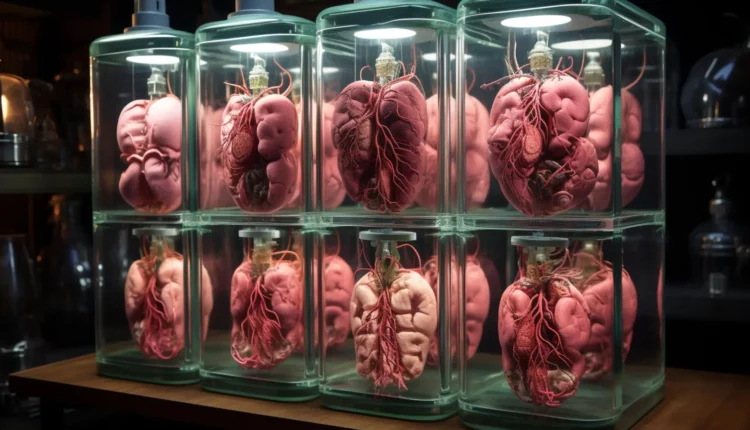©2021 Reporters Post24. All Rights Reserved.
Scientists in Japan have innovatively used hydrogels in cube-like structures to create complex 3D organoids, simplifying previously challenging procedures. This advancement has the potential to revolutionize drug testing and artificial organ growth, opening the door to accessible and diverse research on various organ systems. (Artist’s concept.)
A team of scientists led by Masaya Hagiwara of RIKEN national science institute in Japan has developed an ingenious device, using layers of hydrogels in a cube-like structure, that allows researchers to construct complex 3D organoids without using elaborate techniques. The group also recently demonstrated the ability to use the device to build organoids that faithfully reproduce the asymmetric genetic expression that characterizes the actual development of organisms. The device has the potential to revolutionize the way we test drugs, and could also provide insights into how tissues develop and lead to better techniques for growing artificial organs.
Challenges in Organoid Development
Scientists have long struggled to create organoids—organ-like tissues grown in the laboratory—to replicate actual biological development. Creating organoids that function similarly to real tissues is vital for developing medicines since it is necessary to understand how drugs move through various tissues. Organoids also help us gain insights into the process of development itself and are a stepping stone on the way to growing whole organs that can help patients.

One of the cubes used in the experiments. Credit: RIKEN
However, creating life-like organoids has proven difficult. In nature, tissues develop through an elaborate dance that involves chemical gradients and physical scaffolds that guide cells into certain 3D patterns. In contrast, lab-grown organoids typically develop either by letting the cells grow in homogeneous conditions—creating simple balls of similar cells—or by using 3D printing or microfluidic technologies, which both require sophisticated equipment and technical skills.

Schematic showing the cube system and uses. Credit: RIKEN
A Breakthrough in Organoid Creation
But now, in an initial paper published in Advanced Materials Technologies, the group from the RIKEN Cluster for Pioneering Research announced the development of a new, innovative technique that allows them to spatially control the environment around groups of cells based on cubes, using nothing more elaborate than a pipette.
The method involves confining layers of hydrogels—substances made up mostly of water—with different physical and chemical properties inside a cube-shaped culture vessel. In the study, different hydrogels were inserted into the scaffold using a pipette, and were held in place based on surface tension. Cells could be inserted into the cubes either within the individual hydrogels or as pellets that could move into the different layers, thus making it possible to create a range of tissue types.

Control of the position of organoids within the cube system. Credit: RIKEN
Body-Axis Patterning and Future Perspectives
In a second paper, published in Communications Biology, the group also demonstrated the ability to recreate what is known as body-axis patterning. Essentially, when vertebrates develop there is a head/rear and back/stomach patterning of cell differentiation. Though important for the creation of organoids that faithfully recreate what happens in actual organisms, this has been very difficult to achieve in the laboratory.
In this work, using the cube-based system, the group was able to recreate this patterning, using a mold cap to precisely seed a group of induced pluripotent stem cells (iPSCs) within a cube, and then allowing the cells to be exposed to a gradient of two different growth factors. They even went as far as to “recruit” a lab assistant and a junior high school student to successfully perform the work, showing that the seeding of the cells would not require a high level of expertise. The team also demonstrated that the resulting tissues could be sectioned for imaging and still maintain the information about the gradient orientation.

Cell seeding control in the cube system. Credit: RIKEN
According to Hagiwara, “We are very excited by these achievements, as the new system will make it possible for researchers to quickly, and without difficult technical hurdles, recreate organoids that more closely resemble the way that organs develop in actual organisms. We hope that a range of researchers will use our method to create various new organoids and contribute to research on different organ systems. Eventually, we hope that it will also contribute to understanding how we can build actual artificial organs that can help patients.”

Process of differentiation, slicing, and analysis of organoids. Credit: RIKEN


